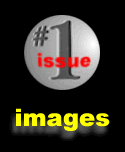From 1950 to 1964, Samuel Fuller was America's "tabloid poet."
Stylistically, his
films recreated a tabloid aesthetic by combining pugnacious action with
over-simplified social issues to create a series of shocking images and
newspaper-headline philosophy. The characters of his stories are tabloid types:
outsiders, underworld figures such as Skip McCoy in Pickup on South Street (1953) and Tolly Devlin in Underworld USA (1961), who don't trust the
collective and yet begrudgingly commit, or they're social outcasts like
the
Eurasian Angie Dickinson in China Gate (1957) or the Nisei cop in
Crimson Kimono (1958), trying to find their place in America's melting pot.
Several
Fuller stories, House of Bamboo (1955), Underworld USA, Shock Corridor
(1963) and The Naked Kiss (1964), involve amoral reporter types,
investigators who
infiltrate a mob, an insane asylum, a small town to uncover truth. For
these characters, danger lies in losing distance and getting too close
to the
aesthetics of the world they inhabit.
This thematic preoccupation with trying to inhabit an alien, irrational
world
creates confusion amongst Fuller's critics. He's been described as an
"American Primitive" by Andrew Sarris, a "right-wing reactionary" by
others. A
staunch Democrat, Fuller's cinematic style--his cinema fist--especially in his war films,
concentrates on the breakdown of rationality by an irrational chaos.
Steel Helmet (1951) presents a battleground in which there are no rules.
After a Korean boy,
Short-Round, is killed by a sniper, Sgt. Zack loses his temper and
mortally
wounds an unarmed Red Chinese officer. Zack acts with suddenness, but
the
confusing demands of 1950s conformity resonates as he shouts at the
prisoner,
"If you die, I'll kill you." The United States Army, from whom Fuller
had
received a Bronze Star and a Purple Heart, condemned the film.
Fuller's poetics are grounded within the traditions of the tabloid
press. Fuller has said that he plotted his potboilers on a blackboard with different color chalk to make sure the compositions of red (action), white (exposition) and blue (romance) were balanced. Fuller's collision of these three modes distinguishes his craft and has been, in part, informed by his work as a crime reporter, 1929-31, on Bernaar Macfadden's Evening Graphic, a poor imitation of the New York Daily News. The Graphic specialized in sensational stories of sordid love, gangland crimes, and murder. Fuller found parallels between film-making and reporting: the cinematic close-up was like a headline.
Although Nicholas Garnham and J. Hoberman acknowledge Fuller's connection to the tabloids, no one has systematically analyzed how his films extend the tabloid aesthetic and what that narrative style means for his overall signature. Fuller emphasizes excess, irrationality and realism to deny the possibility of love. This essay, using some of the paradigmatic narrative structures laid out in Seymour Chatman's Coming to Terms (1991), will demonstrate three dominant aspects to Fuller's newspaper-narrative style: scenes charged with collisions, expository pauses or mini-editorials on larger discursive issues, and "objective" yet caring reporting.

















